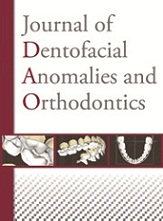No CrossRef data available.
Article contents
Congenitally missing teeth and labio-palatal clefts: keep to the left
Published online by Cambridge University Press: 09 November 2012
Abstract
Objectives: dental anomalies are more frequent for individuals with clefts than for the general population. Our objective is to evaluate the prevalence of dental ageneses in a sampling from Alsace made up of 124 children with clefts (81 boys and 43 girls, average age 12.5 years old).
Method: clinical and radiographic exams make it possible to specify the dental formula as well as the type of clefts that are divided into 4 groups: simple Labial Clefts (LC – 12.9%), Labio-Alveolar Clefts (LAC – 4%), Labio-Palatal Clefts (LPC – 49.2%) and Palatal Clefts (PC – 33.9%).
Results: 63% of the patients present one or more ageneses mainly involving the maxillary lateral incisors (54%) and the maxillary or mandibular second premolars (32%). The percentage of children with congenitally missing teeth is, in ascending order, minimal in the case of LC (33%), average in the case of PC (54%) and highest in cases of LPC (79%). The frequency of ageneses increases proportionally with the severity of the cleft. The left side is most affected (p < 0.01) regardless of the side of the cleft.
Conclusions: dental ageneses are more frequent on the left side, regardless of the side of the cleft. The greater prevalence on the left side could suggest the intervention of overlapping etiopathogenic factors when clefts and dental ageneses are involved.
- Type
- Research Article
- Information
- Copyright
- © RODF / EDP Sciences




